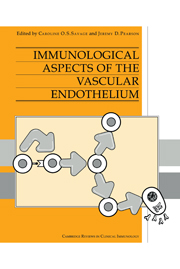Introduction
Control of the access of soluble mediators and leukocytes to sites of inflammation and immune reactions is a crucial function of blood vessels, particularly within the microvasculature. Careful in vivo studies, especially those employing intravital microscopy, first revealed increases in small vessel permeability, apparently caused by direct action of inflammatory mediators on the endothelial cells, and altered properties of the endothelium provoking leukocyte adhesion and emigration (for review see Ryan & Majno, 1977).
Mainly in vitro studies of endothelial cells, starting in the early 1970s, have delineated a rapidly expanding range of properties of endothelium that actively contribute to the maintenance of vascular homeostasis and regulate blood vessel tone and permeability, blood coagulation and fibrinolysis (for review see Pearson, 1994). Following the recognition that communication between different leukocytes to orchestrate their specific functions was due to a variety of secreted polypeptides (the lymphokines) it became pertinent to examine whether endothelial cell properties relevant to the control of inflammatory and immune responses were, in addition, modulated by such molecules. This led, in the 1980s, to the first reports that the adhesive interactions between leukocytes and endothelium could be substantially enhanced by the action of either of two inflammatory cytokines, interleukin 1 (IL-1) and tumour necrosis factor (TNF), or bacterial endotoxins (lipopolysaccharide: LPS) on endothelial cells. Although LPS is not a cytokine, its effects on endothelial cells largely overlap with those of IL-1 and TNF, and it will be discussed in this context in this chapter.
